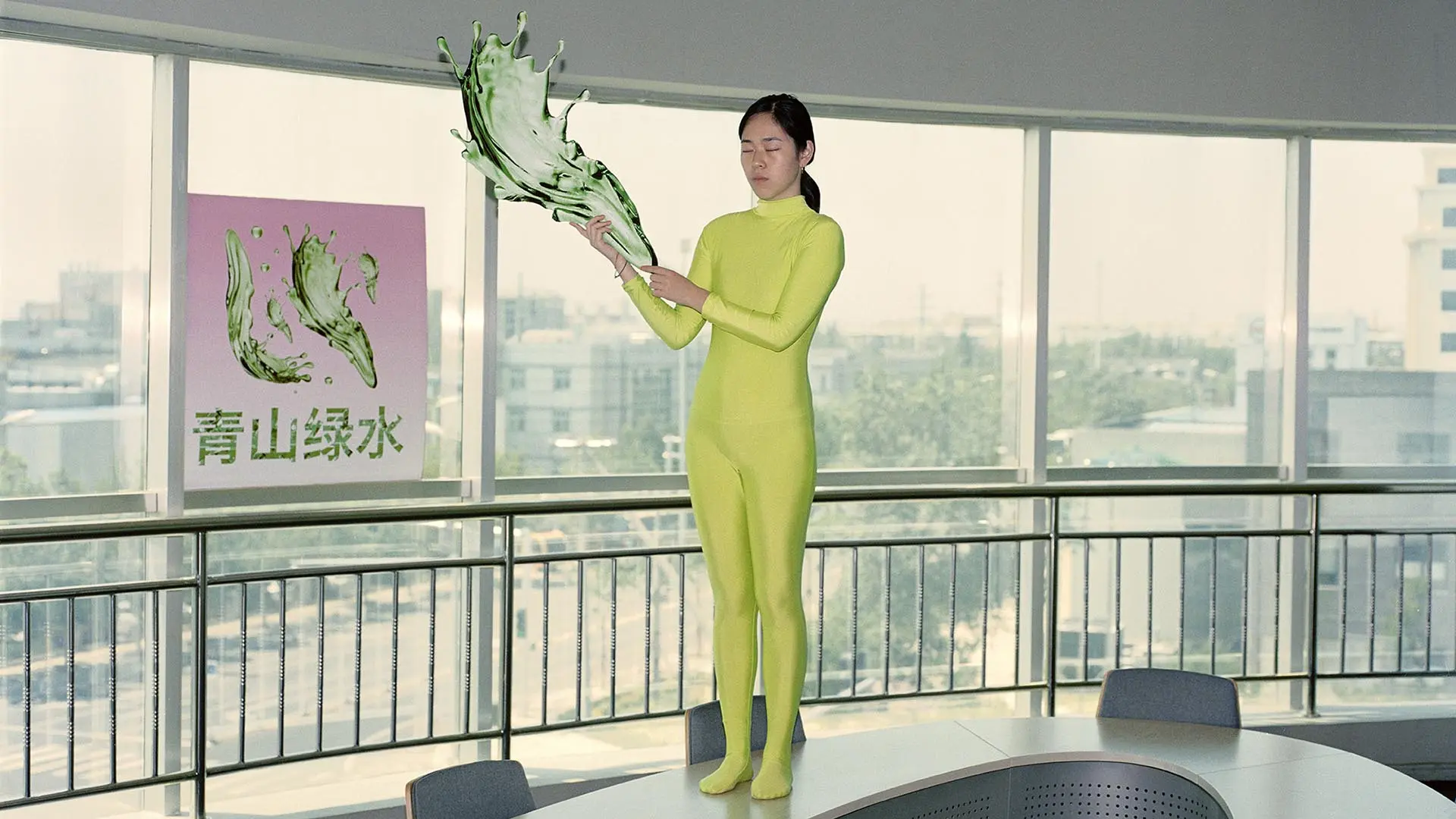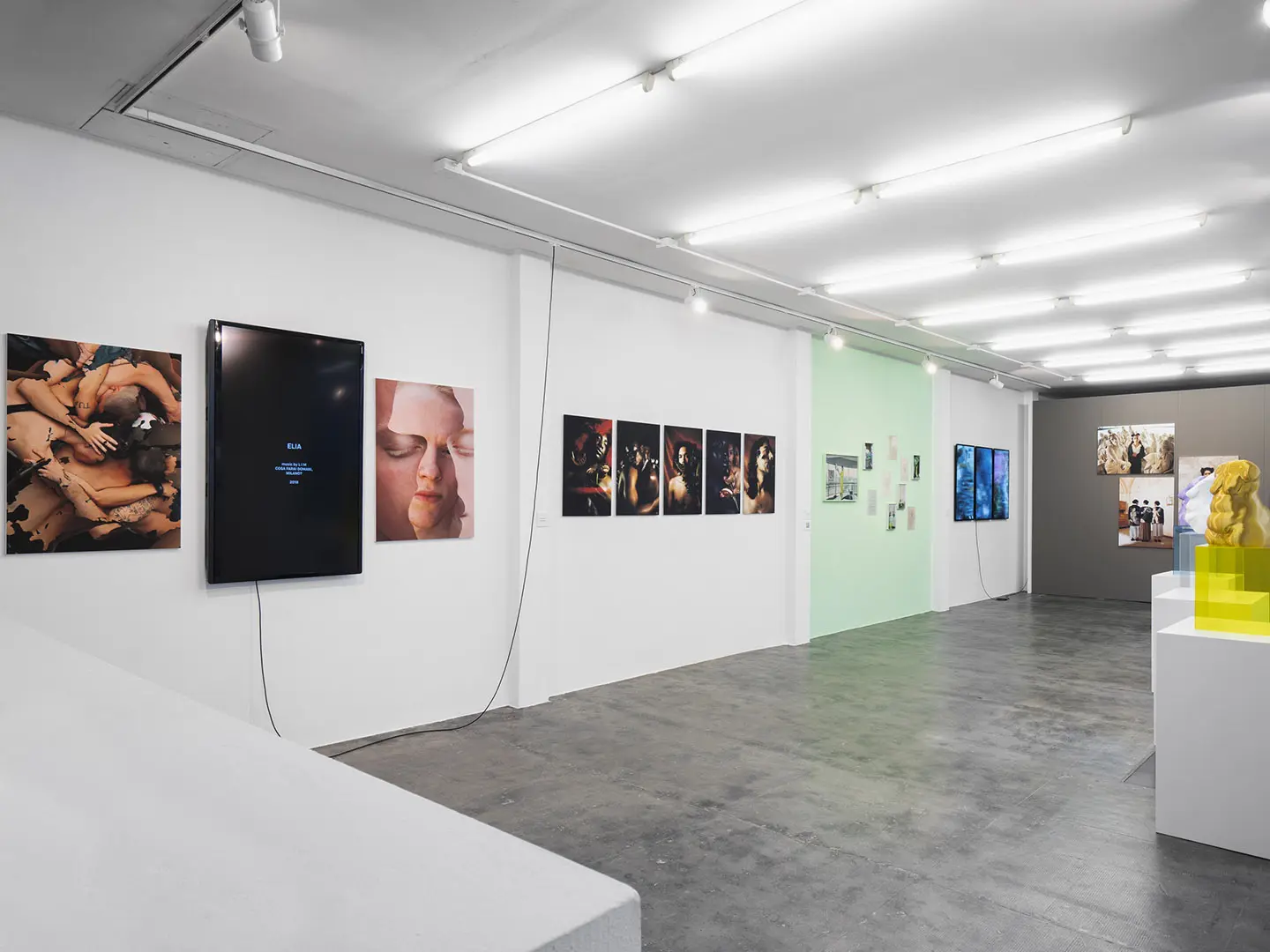In partnership with MiCodmc, a selection of establishments ripe for discovery during the 63rd edition of the Salone del Mobile.Milano, from 8th to 13th April
The Edge Effect: the words of Chiara Bardelli Nonino

Rachele Maistrello Gao Yue #1 (1998-1999), c-print, 50 x 70 cm, 2019
An exhibition curated by Chiara Bardelli Nonino and Jordan Anderson at Marsèll Paradise until November 26 recounts the transformation of Italy’s contemporary identity through the works of fourteen artists.
Fourteen artists were invited to explore potential new forms of community, identity and body alongside new expressions of fashion images in The Edge Effect, a stunning exhibition that maps present-day Italy through their works. The show presents phenomena and apparently impossible to visualize opposing forces (without resorting to cliché), for example the real and virtual, global and local, in photographic, multimedia and augmented reality works that offer a specific vision of the present from Kelly Costigliolo, Elena Cremona + Isabelle Landicho, Karim El Makta, Jon Emmony x Del Core, Sam Gregg + Riccardo, Maria Chiacchio Kamilia Kard, Rachele Maistrello, Andy Picci, Vashish Soobah, Karol Sudolski, Marzio Emilio Villa and Alba Zari, in a variety of media and formats. Chiara Bardelli Nonino, Visual Editor of “Vogue Italia” and “L’Uomo Vogue”, and curator of the Photo Vogue Festival, curated the exhibition along with creative director and fashion/culture journalist Jordan Anderson. We asked Chiara Bardelli Nonino to talk us through the exhibition and how it came about.

Marsèll, The Edge Effect Installation Ph Lorenzo Capelli
Well, the starting point is that I’m a huge fan of non-fiction and science podcasts. One day, I was talking with Jordan about something I had just read, the Edge Effect, the ecological phenomenon of when two ecosystems meet, they influence one another to create something new, with greater biodiversity. We realized that almost this exact concept is unfolding before our very eyes in our generation’s idea of identity and sense of belonging, whether that’s to a community or a nation. We’d wanted to do something on the flip side of cultural appropriation for a long time, that is, talk about the mutual enrichment that occurs when two different cultures meet in a situation of respectful and equal exchange. We put the idea to Marsèll because it seemed to chime with the research they’ve been doing for a while now. They were immediately enthusiastic.
Overall, I’d say two things are happening right now: one is a tension between reality and dream, something that has always been part of fashion photography, even if seems to have had a hard time finding an equilibrium in what’s coming out today. Fashion photography is expected to respond to a whole series of requirements like inclusion, diversity, adherence to a certain type of socio-political interest, faithfully representing the reality to which it refers, and at the same time maintaining an aspirational side, something that by its very nature is elitist and exclusive, a propensity to be escapist, to trigger desire… the very opposite of a 1:1 representation of reality. The second phenomenon is how fashion images are accessed. The majority of artists and editors continue to think of fashion images as stories people read and browse through, when in actual fact fashion has become a pop cultural phenomenon on a par with music and film. The audience it reaches is far wider than in the past, particularly through social media, where images are unbundled, decontextualized, experienced in a matter of milliseconds. One of the most pressing issues for fashion photographers today is how to make images that are meaningful and relevant in their lifetime across multiple platforms.

Marsèll, The Edge Effect Installation Ph Lorenzo Capelli
The new idea of contemporary identity, of identity being a shared lens for interpreting social macro-phenomena – the exhibition’s theme – is pretty much omnipresent internationally, but far less addressed here in Italy. We sat down to curate an exhibition about what it means to be Italian across the board. Whether this characteristic comes from a biographical given, a family choice or legacy, or from a collaborative relationship, as is the case with fashion works, we wanted to tell the story of an Italy that, despite its absence from the mainstream gaze, looms large in our daily experience as a multicultural, open, committed, and ground-breaking space. We asked Andy Picci to create an ad hoc work that says exactly this: the future has already happened. This exhibition, I hope, offers a small fragment of that.
Yes, there are definitely examples of “post-photography”, but that said, the whole show could just as well exist under the overarching umbrella of “post-internet”, something that, more or less, applies to every one of us. Let’s say that the desire to return to materiality, to the tactile nature of photography, to an analogue cadence and aesthetic, while at the same time cross-pollinating with very different techniques, immateriality and a purely virtual aesthetic, are responses to the same collective experience: one in which the online overflows into the real, and vice versa... This world was recounted very well in the book “The Extreme Self: Age of You.” Today, we all have an “internet brain”.
They are, without doubt, universal themes that have always existed in art, even if we view them through our generational lens. The themes may always be the same, but how they are approached, their interpretation and execution, are inevitably bound up with the artist’s personal experience. The artists in the show have lived through the watershed between two worlds: pre- and post-internet. They still remember the world from “before,” even if they live fully-immersed in the “after”… all of which shows through in their work.
I’d venture that as it shifted the axis of our lives online, the pandemic heightened our desire for physical contact, even if I also believe that the theme of the body is strongly associated with the theme of identity. So often is it central to the work of artists who deal with such issues, claiming the body’s tangible nature and its right to occupy space, a right extended to different bodies, some of which might be hybrid, monstrous or fantastical.
The exhibition presents a really wide spectrum of bodily representation, from Marzio Villa or Elena Cremona + Isabelle Landicho’s activism around the black body, to work on the female body by Alba Zari and Kamilia Kard, to Karol Sudolski’s three-dimensional glitches.
The Edge Effect
Marsèll Paradise, Milan


 Salone Selection
Salone Selection



















